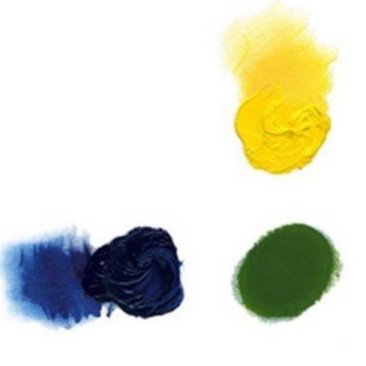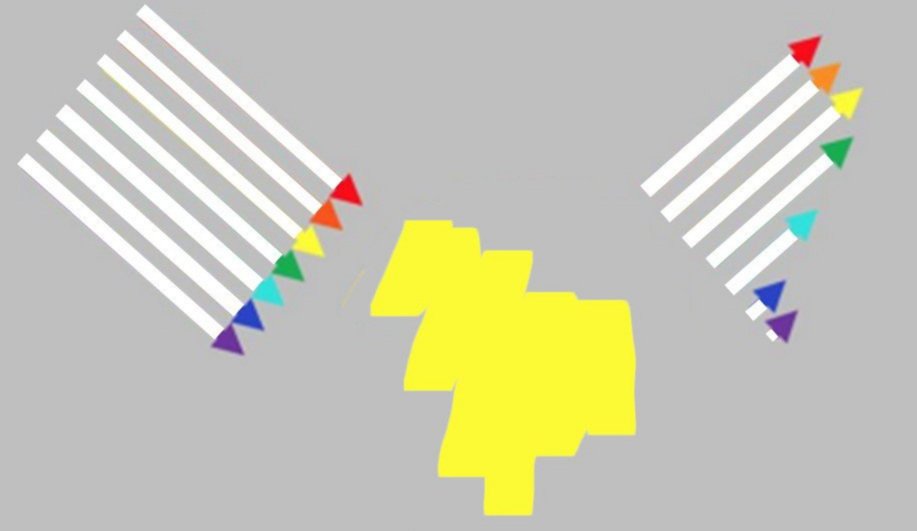Misconception: Green paints made by mixing ‘contain’ yellow and blue
Concept Corrected: When we mix coloured lights or paints, it's not the colours that are mixing
Does green paint contain yellow and blue?
Have you ever heard that the colour green ‘contains’ yellow and blue? Or perhaps that black, grey and so-called tertiary colours ‘contain’ all three so-called primary colours, red, yellow and blue? Or that white light ‘contains’ all the colours of the spectrum?
All of these misconceptions stem from the understandable but mistaken view that the colours we perceive in paints and lights are physically present in those paints and lights, and these colours somehow mix together when the paints or lights are mixed. For example, we can mix blue and yellow-coloured paints, neither of which appear ‘greenish’ on their own, but when mixed together appear as green. Since the component paints apparently do not ‘contain’ any green, it seems inescapable that the green colour seemingly present in the mixture is somehow ‘made of’ yellow and blue. But this is not the case. Colour is a perception, and colours and coloured media are not the same thing.
Yellow coloured paints reflect light with long and middle wavelengths most of all.
Blue coloured paints reflect light with short wavelengths most of all.
When blue and yellow coloured paints mix, not much light is reflected, but the middle part of the spectrum is reflected most of all.
Coloured media include both light and colourants like pigments and dyes which interact with light. Paints are generally a combination of powdered pigments within some kind of binder. Paints or other coloured surfaces absorb some portions of the spectrum and reflect others. For example, yellow coloured paints reflect light with wavelengths from the long and middle parts of the spectrum most of all, and blue coloured paints reflect light with wavelengths from the short part of the spectrum most of all. When we mix these two paints together, their pigment particles intermingle. This results in a paint mixture which does not reflect a lot of light. The middle parts of the spectrum are reflected most of all from this mixture, and we perceive the mixture as greenish. The exact mixed colour we see depends on the specific paints and amounts of paint we use. Each type (and brand) of paint reflects light with its own particular distribution of wavelengths, so the final mixed colour varies depending on the specific physical details of the media used.
So, we see the mixture as green, not because the colours yellow and blue in any sense combine to make green, but because both the yellow and the blue paints reflect some light from the middle part of the spectrum, and our eyes and brain decode this distribution of light as greenish. Mixture of this kind, in which each component removes light of some wavelengths, is called subtractive. This explanation of paint mixture was first given by the scientist Hermann von Helmholtz in 1852.








